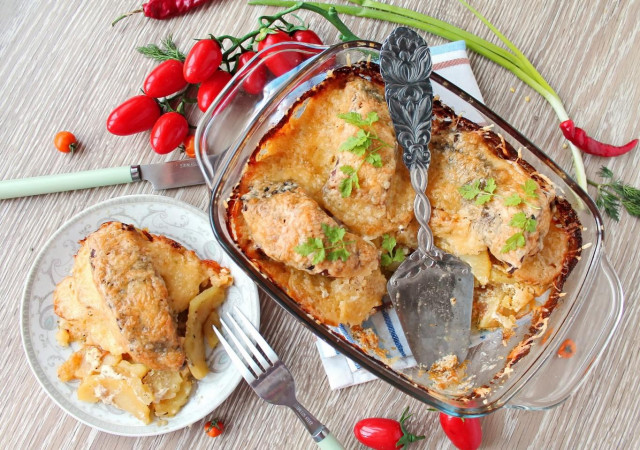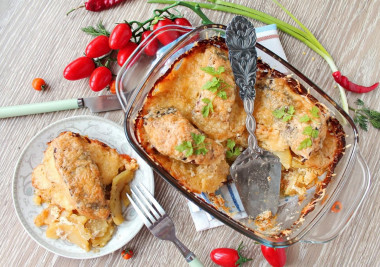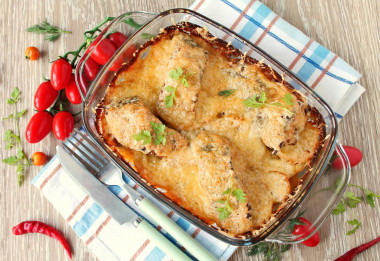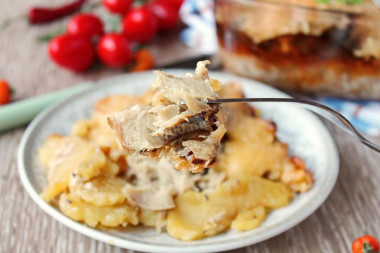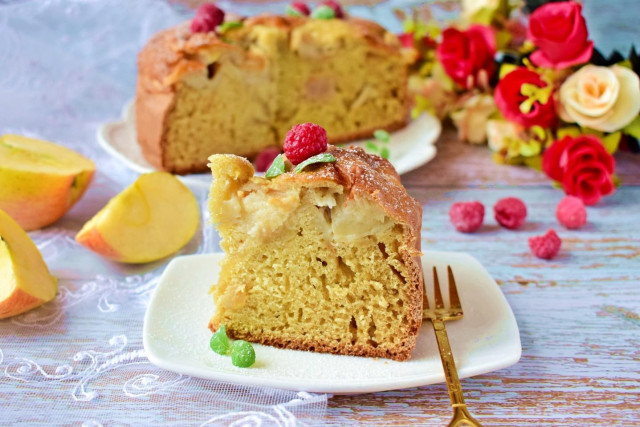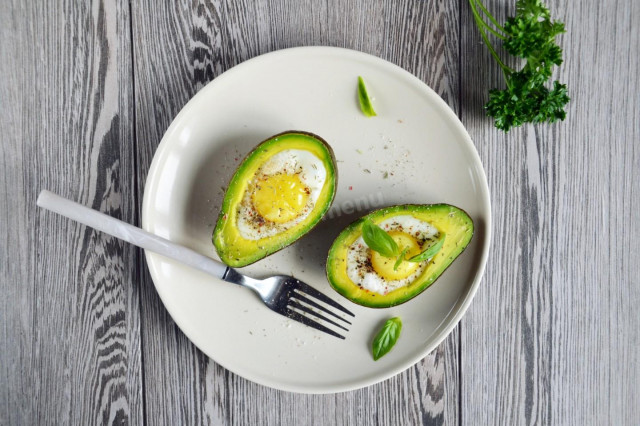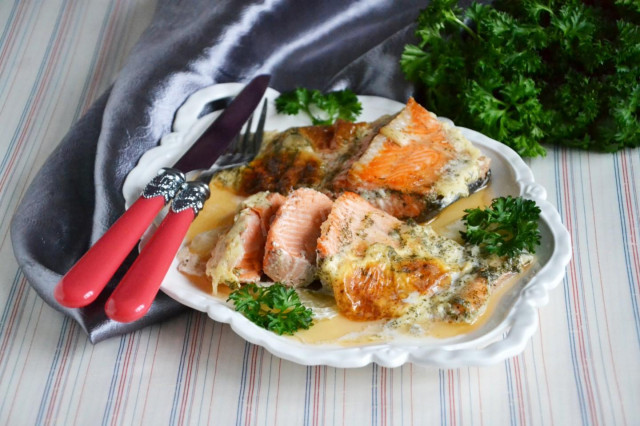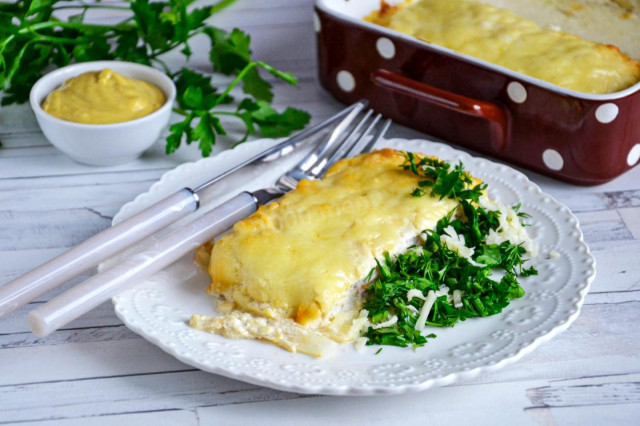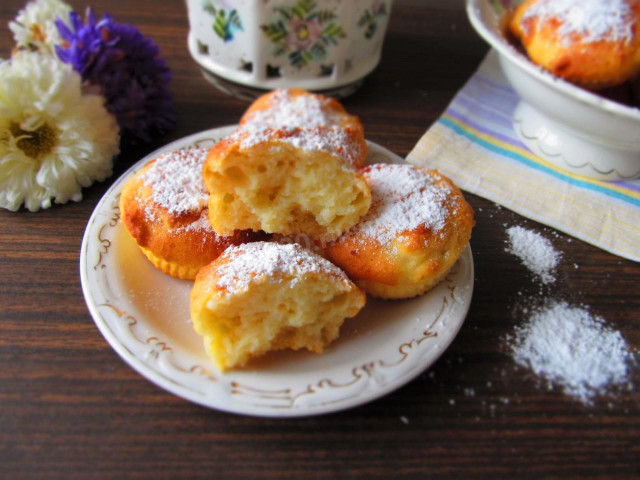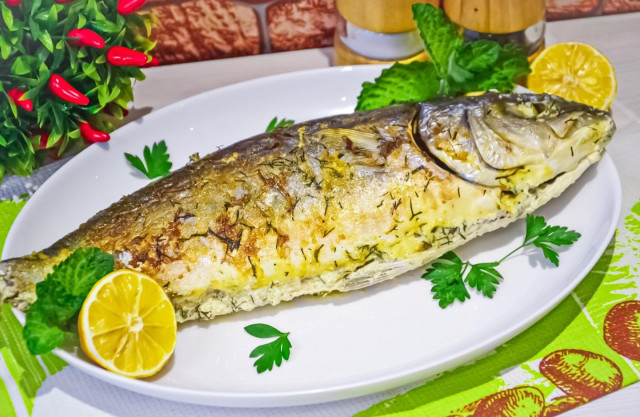Composition / ingredients
Step-by-step cooking
Step 1:
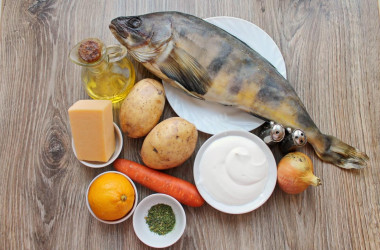
How to bake a turpug in the oven? First, prepare all the necessary ingredients. If the fish is frozen, put it in containers on the bottom shelf of the refrigerator and keep it until it is completely thawed.
Step 2:
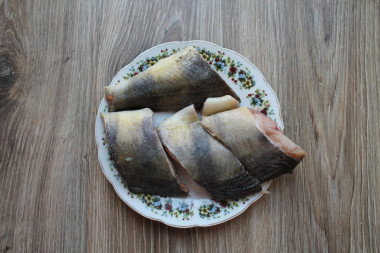
Peel off the scales and rinse under cold water. The scales of the terpug are quite small and sit tightly on the body. To clean, use a special device or quickly pour hot, about 80 degrees, water over the fish. But not with boiling water, otherwise cook the top layer. Remove the head, insides, rinse, dry and cut into portions.
Step 3:
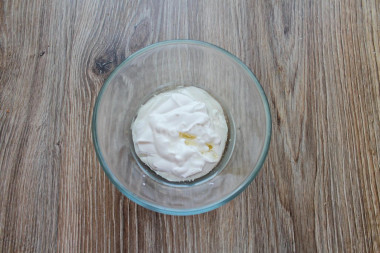
Put sour cream in a bowl, pour vegetable oil and lemon juice.
Step 4:
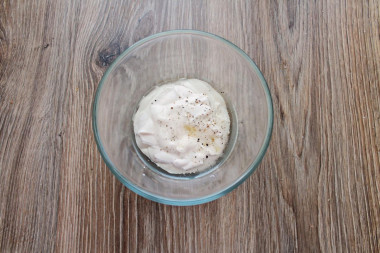
Add salt and black pepper to the bowl with sour cream. Ordinary black pepper can be replaced with white or green.
Step 5:
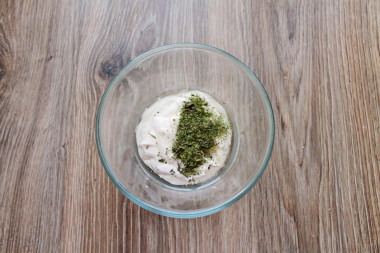
Pour dried herbs into a bowl. It is dry greens that are needed, fresh in the cooking process will burn and lose its color.
Step 6:
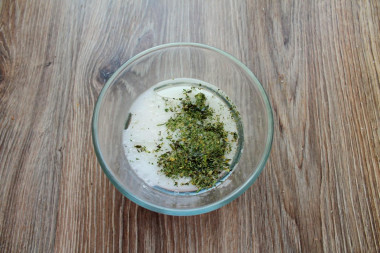
Pour water into a bowl and mix everything well.
Step 7:
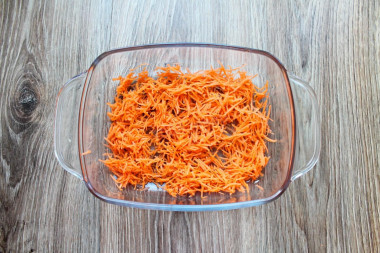
Grease the baking dish 16 * 21 centimeters with vegetable oil. Peel and grate the carrots on a medium grater, put an even layer on the bottom of the mold.
Step 8:
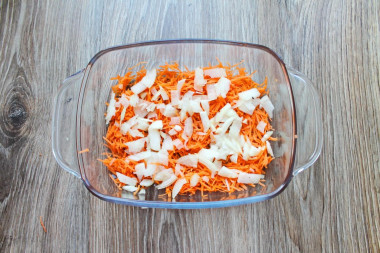
Peel and chop the onion, put the carrots on top.
Step 9:
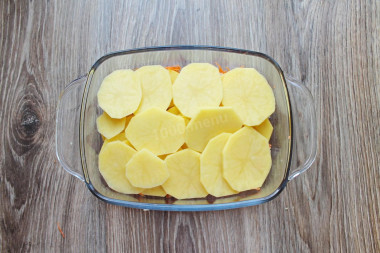
Peel the potatoes and cut them into thin circles, lay them on top of the vegetables. The thinner you slice the potatoes, the faster they will cook.
Step 10:
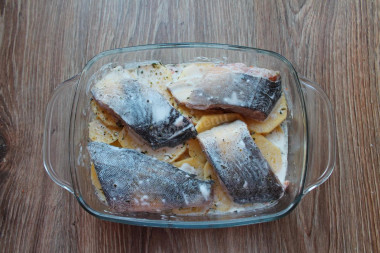
Dip each piece of terpug into the sour cream mixture and place on top of the potatoes. Pour the remains of the sour cream mass into the mold and shake it a little so that the liquid spills evenly.
Step 11:
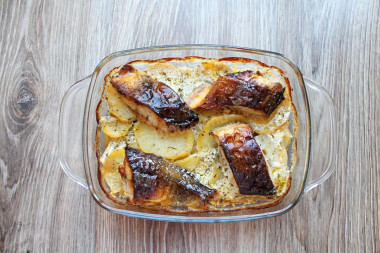
Put in a hot oven and bake everything at 180 degrees for 40 minutes. Focus on your oven. The potatoes should be fully cooked. Remove the fish pan from the oven. At this stage it is already possible to serve, but it is still tastier under the cheese crust.
Step 12:
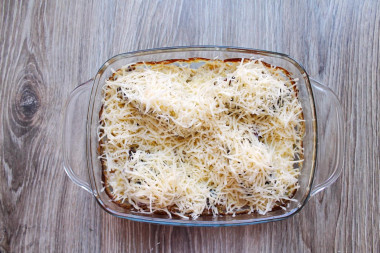
Grate the cheese on a medium grater and cover the top of the terpug and potatoes. Put it back in the oven and bake for another 5-10 minutes to the desired degree. Remove the finished fish and serve immediately.
Step 13:
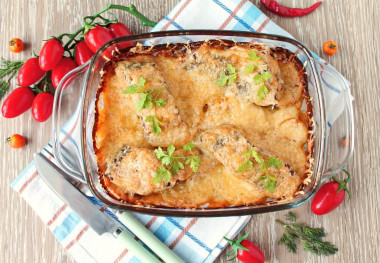
Bon appetit.
Keep in mind that the final result in this dish also depends on how you chop the carrots: grated carrots will turn into mush during heat treatment and mix evenly with the rest of the ingredients, cut into strips or cubes will retain their shape.
Use oil with a high smoking temperature for frying! Any oils are useful only until a certain temperature is reached - the point of smoking, at which the oil begins to burn and toxic substances, including carcinogens, are formed in it.
Unrefined oils, with rare exceptions, have a low smoking point. There are a lot of unfiltered organic particles in them, which quickly begin to burn.
Refined oils are more resistant to heating, and their smoking point is higher. If you are going to cook food in the oven, on a frying pan or grill, make sure that you use oil with a high smoking point. The most common of the oils with a high smoking point: refined varieties of sunflower, olive and grape.
Keep in mind that everyone's ovens are different. The temperature and cooking time may differ from those specified in the recipe. To make any baked dish successful, use useful information about the features of ovens !
Caloric content of the products possible in the composition of the dish
- Ripe potatoes - 80 kcal/100g
- Baked potatoes - 70 kcal/100g
- Mashed potatoes - 380 kcal/100g
- Boiled potatoes - 82 kcal/100g
- Potatoes in uniform - 74 kcal/100g
- Fried potatoes - 192 kcal/100g
- Sour cream of 30% fat content - 340 kcal/100g
- Sour cream with 25% fat content - 284 kcal/100g
- Sour cream with 20% fat content - 210 kcal/100g
- Sour cream of 10% fat content - 115 kcal/100g
- Sour cream - 210 kcal/100g
- Carrots - 33 kcal/100g
- Dried carrots - 275 kcal/100g
- Boiled carrots - 25 kcal/100g
- Dutch cheese - 352 kcal/100g
- Swiss cheese - 335 kcal/100g
- Russian cheese - 366 kcal/100g
- Kostroma cheese - 345 kcal/100g
- Yaroslavsky cheese - 361 kcal/100g
- Altai cheese 50% fat content - 356 kcal/100g
- Soviet cheese - 400 kcal/100g
- Cheese "steppe" - 362 kcal/100g
- Uglich cheese - 347 kcal/100g
- Poshekhonsky cheese - 350 kcal/100g
- Lambert cheese - 377 kcal/100g
- Appnzeller cheese with 50% fat content - 400 kcal/100g
- Chester cheese with 50% fat content - 363 kcal/100g
- Edamer cheese with 40% fat content - 340 kcal/100g
- Cheese with mushrooms of 50 % fat content - 395 kcal/100g
- Emmental cheese with 45% fat content - 420 kcal/100g
- Gouda cheese with 45% fat content - 356 kcal/100g
- Aiadeus cheese - 364 kcal/100g
- Dom blanc cheese (semi-hard) - 360 kcal/100g
- Lo spalmino cheese - 61 kcal/100g
- Cheese "etorki" (sheep, hard) - 401 kcal/100g
- White cheese - 100 kcal/100g
- Fat yellow cheese - 260 kcal/100g
- Altai cheese - 355 kcal/100g
- Kaunas cheese - 355 kcal/100g
- Latvian cheese - 316 kcal/100g
- Limburger cheese - 327 kcal/100g
- Lithuanian cheese - 250 kcal/100g
- Lake cheese - 350 kcal/100g
- Gruyere cheese - 396 kcal/100g
- Ground black pepper - 255 kcal/100g
- Vegetable oil - 873 kcal/100g
- Salt - 0 kcal/100g
- Water - 0 kcal/100g
- Onion - 41 kcal/100g
- Lemon juice - 16 kcal/100g
- Fresh frozen soup greens in a package - 41 kcal/100g
- Greenery - 41 kcal/100g
- Terpug - 102 kcal/100g

